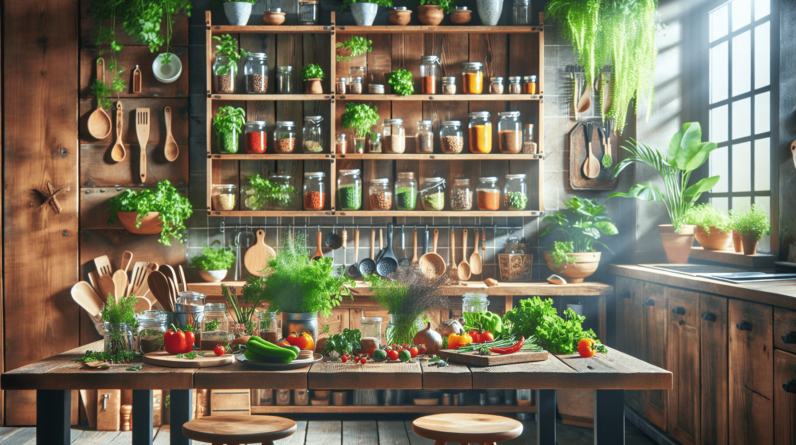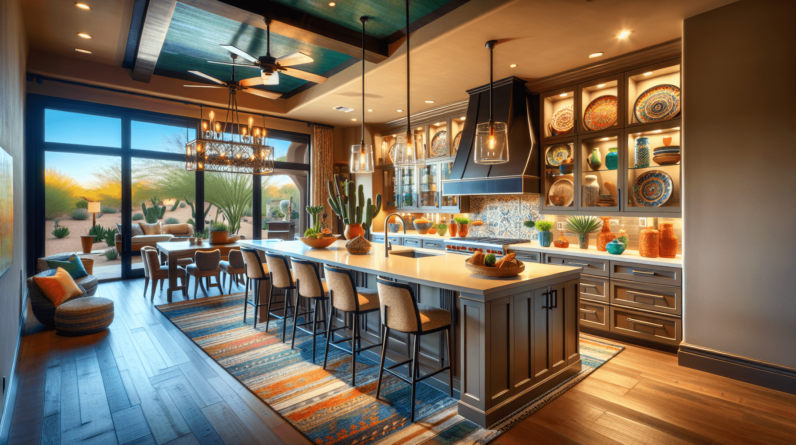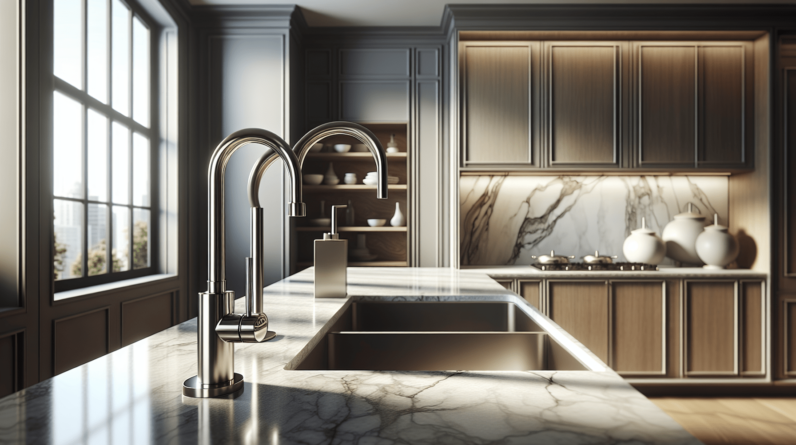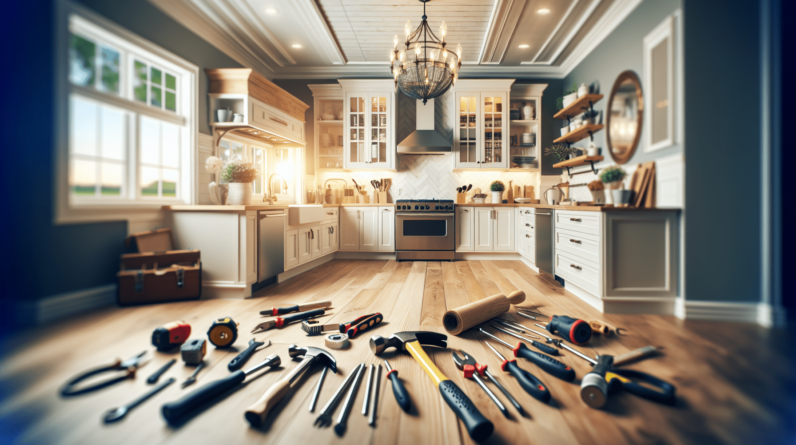
Have you ever thought about transforming your kitchen into a space that better suits your lifestyle and needs? An inviting, functional kitchen can enhance your home, making it a more enjoyable place to cook and gather. With a bit of planning, your dream kitchen can become a reality.
Understanding Kitchen Remodeling
Remodeling your kitchen isn’t just about aesthetics; it’s also about improving functionality and efficiency. Whether you want a more modern look, additional storage, or improved layout, understanding the remodeling process is essential.
What is Kitchen Remodeling?
Kitchen remodeling involves changing the structure, layout, and design of your kitchen. It can include simple updates like painting cabinets or more extensive renovations that involve changing the entire floor plan or adding new appliances. A remodel can make your kitchen more user-friendly, stylish, and comfortable—all while boosting your home’s value.
Why Consider Remodeling Your Kitchen?
There are several compelling reasons to consider a kitchen remodel. You may need more space, an updated look, or just to fix issues like poor layout or insufficient storage. A remodel can also make your kitchen more energy efficient, saving you money in the long run.
The Remodeling Process
Understanding the remodeling process is key to a successful transformation of your kitchen. Here’s a breakdown of what to expect.
Initial Planning
Before jumping into the remodeling, take some time to plan. Start by determining your budget, needs, and wants for your new kitchen. Consider factors like the amount of cooking you do, how often you entertain, and whether you have children or pets.
Gathering Inspiration
Look for inspiration by browsing design magazines, websites, or social media platforms like Pinterest. Create a mood board to keep track of ideas you love and features you want to incorporate into your new kitchen design.
Working with Professionals
Depending on the scale of your remodel, you may want to hire professionals. This can include interior designers, architects, and contractors. They can help you make the most of your space and assist with structural changes, ensuring everything meets local building codes.
Permits and Regulations
Most remodeling jobs that change the structure require permits. Check with your local municipality for regulations and ensure you have all necessary permits to avoid any complications down the line.
Setting a Budget
A kitchen remodel can range in price depending on various factors like size, materials, and labor. Being realistic about your budget is essential to avoid overspending.
Factors Influencing Cost
Several factors can affect the cost of your kitchen remodel:
| Factor | Description |
|---|---|
| Size of the Kitchen | Larger kitchens typically cost more to remodel. |
| Materials | High-end materials can significantly increase the budget. |
| Appliances | Upgrading to new, high-efficiency appliances can be pricey. |
| Labor | The cost of hiring professionals varies widely. |
| Changes in Layout | Changing the kitchen layout can lead to additional costs. |
Establishing Your Budget
Break down your overall budget into various categories such as cabinets, countertops, hardware, lighting, and appliances. It can help you prioritize where to spend more and where you might save.
Popular Kitchen Layouts
Before designing your new kitchen, it helps to understand common kitchen layouts. Each layout offers unique advantages and suits different cooking styles and needs.
The Work Triangle
The work triangle is a design concept that involves placing the stove, sink, and refrigerator in a triangular formation to enhance efficiency. This is a crucial aspect of kitchen design, ensuring everything you need is easily within reach.
Types of Kitchen Layouts
-
Galley Kitchen: This layout features two parallel countertops with a walkway in between. It’s great for smaller spaces, as it maximizes efficiency.
-
L-Shaped Kitchen: An L-shaped kitchen uses two adjoining walls, providing an open space while maintaining a distinct cooking area.
-
U-Shaped Kitchen: This design utilizes three walls, maximizing counter space and storage, making it ideal for larger kitchens.
-
Island Kitchen: Adding an island provides ample prep space and can serve as a casual dining area, perfect for modern homes.
-
Open Concept Kitchen: Blending the kitchen with the living or dining room creates a seamless flow, great for entertaining.
Kitchen Design Elements
Choosing design elements is essential to creating a cohesive and functional kitchen. From cabinets to countertops, various options can help you achieve your desired aesthetic.
Cabinets
Cabinets are often the focal point of any kitchen. Consider materials, colors, and styles that complement your overall design. Whether you prefer classic wood finishes or modern painted options, the right cabinets can enhance your kitchen’s look.
Countertops
Selecting the right countertop material can make a significant difference in both aesthetics and functionality. Here’s a quick overview of popular options:
| Material | Pros | Cons |
|---|---|---|
| Granite | Durable, heat-resistant | Requires periodic sealing |
| Quartz | Low maintenance, non-porous | Can be expensive |
| Marble | Elegant appearance | Susceptible to scratches and stains |
| Laminate | Affordable, variety of styles | Less durable than stone |
| Butcher Block | Warm, inviting aesthetics | Needs regular oiling |
Flooring
The right flooring can tie the entire kitchen together. Consider durability, water resistance, and ease of cleaning when choosing your flooring. Options like tile, vinyl, and hardwood each have their pros and cons.
Lighting
Lighting plays a crucial role in your kitchen’s function and atmosphere. Layering different types of lighting—ambient, task, and accent—can create a warm and inviting space. Overhead fixtures, under-cabinet lighting, and decorative options should all be part of your plan.

Choosing Appliances
Appliances can be a significant part of your kitchen remodel. Choosing the right appliances not only enhances functionality but can also improve energy efficiency.
Energy Efficiency
Look for energy-efficient models when choosing new appliances. These appliances use less energy and can save you money on utility bills. Always consider the Energy Star rating when looking for new ovens, refrigerators, and dishwashers.
Style and Finish
Choose a style and finish that matches your design. Stainless steel is a popular choice for a modern look, while retro colors may suit a vintage-inspired kitchen. Group appliances together for a cohesive look or mix and match finishes for a unique appearance.
The Importance of Storage Solutions
As you plan your kitchen remodel, consider how you can maximize storage in your design. An organized kitchen makes cooking and entertaining much more enjoyable.
Cabinets and Shelving
Take advantage of vertical space by using taller cabinets or open shelving. This can help create an illusion of a larger kitchen while maximizing functionality.
Pull-Out Drawers and Organizers
Incorporate pull-out drawers and organizers to make access easier. For instance, a pull-out pantry can save time and effort, while drawer dividers can keep utensils organized.
Magnetic Strips and Hooks
Consider adding magnetic strips for knives and hooks for pots and pans. This not only saves space but can also serve as a design element for your kitchen.
Final Touches
Once you’ve gone through the remodeling process, turning your kitchen into a home often comes down to the final touches. Personalizing your kitchen can make it feel truly yours.
Décor and Accessories
Select decorative items that reflect your style. Personal touches like artwork, plants, and decorative dishware can transform your kitchen from merely functional to a warm and inviting space.
Color Schemes
Using colors that evoke a certain mood can significantly influence the kitchen’s atmosphere. Neutral tones can create a calm environment, while bright colors can energize and stimulate creativity.
Textures and Fabrics
Mixing textures, such as wood, metal, and fabric, can add depth and interest to your kitchen design. Consider using textiles like window treatments, table linens, or cushions to enhance the overall look.
Maintenance Post-Remodel
After your remodeling project is complete, maintaining your new kitchen is essential to keeping it looking great and functioning well.
Regular Cleaning
Establish a regular cleaning routine to keep your kitchen neat and tidy. This includes wiping down surfaces, cleaning appliances, and maintaining your flooring.
Annual Inspections
Schedule a yearly inspection of appliances to ensure they are functioning efficiently. This can prevent small issues from turning into more significant problems.
Update as Needed
Stay open to making small updates over time. Whether it’s changing cabinet hardware, switching out lighting fixtures, or adding new decor, keeping your kitchen fresh can make it inviting for years to come.
Conclusion
If you’re looking for kitchen remodeling services near you, it’s essential to do a bit of research. Evaluate your needs and budget, gather inspiration, and consider working with professionals who can help bring your vision to life. A kitchen remodel can greatly enhance your home’s value and create a space that you and your loved ones can enjoy to the fullest.
Taking the time to plan and execute your kitchen remodel carefully will ultimately lead to a successful transformation. So, get started on your exciting journey, and soon you’ll be enjoying a kitchen that truly feels like home!






